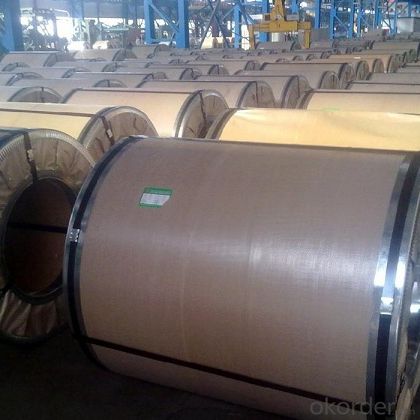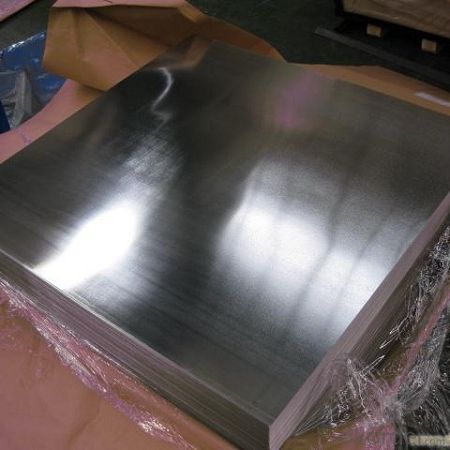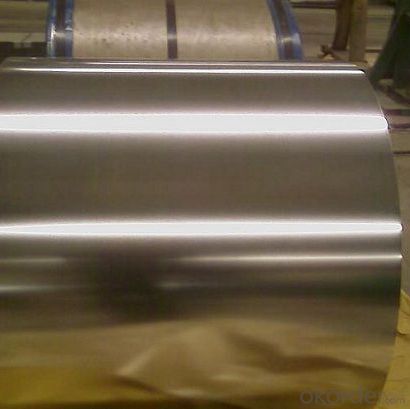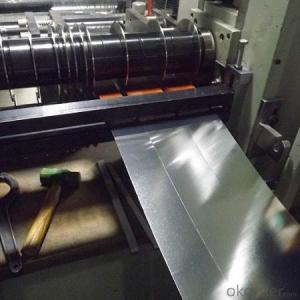Tinplate of First Class Level for Making Liquid food cans
- Loading Port:
- Tianjin
- Payment Terms:
- TT OR LC
- Min Order Qty:
- 50 m.t.
- Supply Capability:
- 40000 m.t./month
OKorder Service Pledge
OKorder Financial Service
You Might Also Like
Item specifice
Tinplate of First Class Level for Making Liquid food cans
1.Structure of Description
Electrolytic Tinplate Sheets is one of the metal packing materials, which is widely used for making painting cans ,chemical package cans , electrical cable ,battery and metal printing etc. For caps, there are some customers also need TFS, if you have some demand for TFS,also can contact with us.
2. Main Features
Steady and high quality
Fast shipment
Good experience for export work
For the surface, Plate uniform in thickness,uniform and smooth tin coating, without flaws,rusts,scratch,wave,nick of tin coating etc.



Specifications
| Type | MR, SPCC |
| Temper(BA&CA) | T1-T5, DR8-DR10 |
| Coating | 1.1-8.4g/m^2 |
| Thickness& Tolerance | 0.15-0.5mm(tolerance +/-0.01mm) |
| Width& Tolerance | 600-1010mm(tolerance +2/-0mm) |
| I.D | 508mm |
| Coil weight | 3-10MT |
| Passivation | 311 |
| Oiling | DOS |
| Surface finish | Bright, stone |
| Package | Seaworthy Export Standard Wooden Pallet |
| Standard | ISO 11949 -1995, JIS G3303,ASTM A623, BS EN 10202 |
| Special specifications are available on customers' requirements | |
Application
Tinplate is widely used for making all types of containers, electrical machinery parts and many other products.
- Chemicals and painting cans
- Dry food cans, such as fancy cans, biscuit cans, milk powder cans, tea cans,
- Sea food cans
- Crown corks, easy open ends
- Electrical machinery parts
- Bakeware and household kitchen parts
FAQ
CNBM International Corporation
CNBM International Corporation, as an important import and export platform of CNBM Group, enjoys competitive advantages in importing and exporting of building materials as well as complete sets of machinery and equipments, engineering, and project contracting.
CNBM Branch Offices
In order to promote the business connection, CNBM has established branches and offices in lots of foreign countries, such as USA, GERMANY, UAE, SAUDI ARABIA, IRAN, JORDAN, LIBIA,ETHIOPIA, INDONESA, INDIA,VIETNAM,RUSSIA,KAZAKHSTAN. It is very helpful for the communication and after- sale services.
Factory Introduction
CNBM as one of the largest suppliers in tinplate industry, offers clientss prime quality tinplate in both coil and sheets. With multi-plants and fully integraded production, the annual capacity of tinplate is 400,000MT.
To ensure the high quality if the tinplate, CNBM owns complete equipment series.
- Reversing cold rolling machines: 14 sets
- Continuous rolling machines: 2 sets
- BA furnaces: 50
- CA line: 1
- Tinplate production line: 2
- SA& DA reduced tinplate sheet: Available
CNBM also produce other steel products, such as cold-rolled steel, hot dip galvanized steel, color coated steel and tin free steel coils and sheets.
- Q:What are the main factors affecting tinplate coil surface finish?
- The main factors affecting tinplate coil surface finish include the quality of the tin coating, the cleanliness of the substrate, the condition of the rolling mill, the temperature and pressure during the rolling process, the presence of impurities or contaminants, and the effectiveness of post-processing treatments such as annealing or tempering.
- Q:What are the advantages of using tinplate for jewelry?
- One advantage of using tinplate for jewelry is its affordability. Tinplate is a cost-effective material compared to precious metals such as gold or silver, making it accessible to a wider range of consumers. Additionally, tinplate is lightweight, making it comfortable to wear for extended periods. It also offers versatility in design, allowing for intricate and detailed jewelry pieces. Lastly, tinplate is highly resistant to corrosion, ensuring the longevity and durability of the jewelry.
- Q:What are the advantages of using tinplate for automotive parts?
- Tinplate offers several advantages for automotive parts. Firstly, it provides excellent corrosion resistance, making it ideal for parts exposed to harsh environmental conditions. Additionally, tinplate offers good formability, allowing for complex shapes and designs, providing flexibility in manufacturing. It also offers high strength and durability, ensuring long-lasting performance and safety. Furthermore, tinplate is lightweight, contributing to improved fuel efficiency and reduced emissions. Lastly, it is a cost-effective material, providing value for money in automotive part production.
- Q:What are the main quality standards for tinplate?
- The main quality standards for tinplate include the thickness and uniformity of the tin coating, adhesion strength between the tin and base metal, absence of surface defects such as scratches or dents, and compliance with specific mechanical and chemical properties required for different applications.
- Q:How does tinplate affect the sound quality of musical instruments?
- Tinplate can have a significant impact on the sound quality of musical instruments. Due to its unique properties, such as being lightweight and having good resonance, tinplate is often used to construct various components of musical instruments, particularly in brass instruments like trumpets and trombones. The use of tinplate can enhance the instrument's tonal characteristics, producing a brighter and more vibrant sound. Additionally, tinplate's smooth surface can contribute to improved airflow and response, allowing musicians to achieve better control and projection. Overall, tinplate plays a crucial role in shaping the sound quality and performance of musical instruments.
- Q:What are the main trends in tinplate packaging?
- Some of the main trends in tinplate packaging include the increasing demand for sustainable and eco-friendly packaging solutions, the rise of convenient and innovative packaging designs, and the incorporation of advanced technologies for improved product protection and preservation. Additionally, there is a growing preference for personalized and customized tinplate packaging to enhance brand identity and consumer engagement.
- Q:What are the main regulations governing tinplate recycling?
- The main regulations governing tinplate recycling vary by country and region. However, some common regulations include proper sorting and separation of tinplate from other materials, ensuring safe handling and storage of tinplate waste, and compliance with environmental standards for recycling processes. Additionally, many jurisdictions require proper labeling and documentation for tinplate recycling facilities and may have specific requirements for the disposal of hazardous waste generated during the recycling process.
- Q:How is tinplate coated for corrosion resistance?
- Tinplate is coated for corrosion resistance through a process called electrolytic tinning. This involves immersing the tinplate in a bath containing a tin salt solution and passing an electric current through it. The electric current causes tin ions to bond with the surface of the tinplate, forming a thin layer of tin that acts as a protective barrier against corrosion.
- Q:What are the advantages of using tinplate for HVAC components?
- There are several advantages of using tinplate for HVAC components. Firstly, tinplate is highly resistant to corrosion, which is crucial for HVAC systems that are exposed to moisture and varying temperatures. Secondly, tinplate has excellent thermal conductivity, allowing for efficient heat transfer within the system. Additionally, tinplate is lightweight yet strong, making it easy to handle and install while ensuring durability. Lastly, tinplate is a sustainable material as it is fully recyclable, aligning with the growing demand for eco-friendly HVAC solutions.
- Q:How has tinplate evolved over the years?
- Tinplate has evolved significantly over the years in terms of its production process, durability, and applications. Initially, tinplate was made by coating iron sheets with a thin layer of tin to prevent corrosion. However, as technology advanced, electroplating replaced the traditional hot-dipping method, resulting in a more efficient and cost-effective production process. Additionally, the development of various alloy coatings has further enhanced the durability of tinplate, making it more resistant to rust and damage. Moreover, tinplate has expanded its applications beyond traditional cans, finding its way into packaging for food, beverages, aerosols, and cosmetics. Overall, the evolution of tinplate has revolutionized the packaging industry, offering improved quality, versatility, and sustainability.
1. Manufacturer Overview |
|
|---|---|
| Location | |
| Year Established | |
| Annual Output Value | |
| Main Markets | |
| Company Certifications | |
2. Manufacturer Certificates |
|
|---|---|
| a) Certification Name | |
| Range | |
| Reference | |
| Validity Period | |
3. Manufacturer Capability |
|
|---|---|
| a)Trade Capacity | |
| Nearest Port | |
| Export Percentage | |
| No.of Employees in Trade Department | |
| Language Spoken: | |
| b)Factory Information | |
| Factory Size: | |
| No. of Production Lines | |
| Contract Manufacturing | |
| Product Price Range | |
Send your message to us
Tinplate of First Class Level for Making Liquid food cans
- Loading Port:
- Tianjin
- Payment Terms:
- TT OR LC
- Min Order Qty:
- 50 m.t.
- Supply Capability:
- 40000 m.t./month
OKorder Service Pledge
OKorder Financial Service
Similar products
New products
Hot products
Hot Searches
Related keywords




























